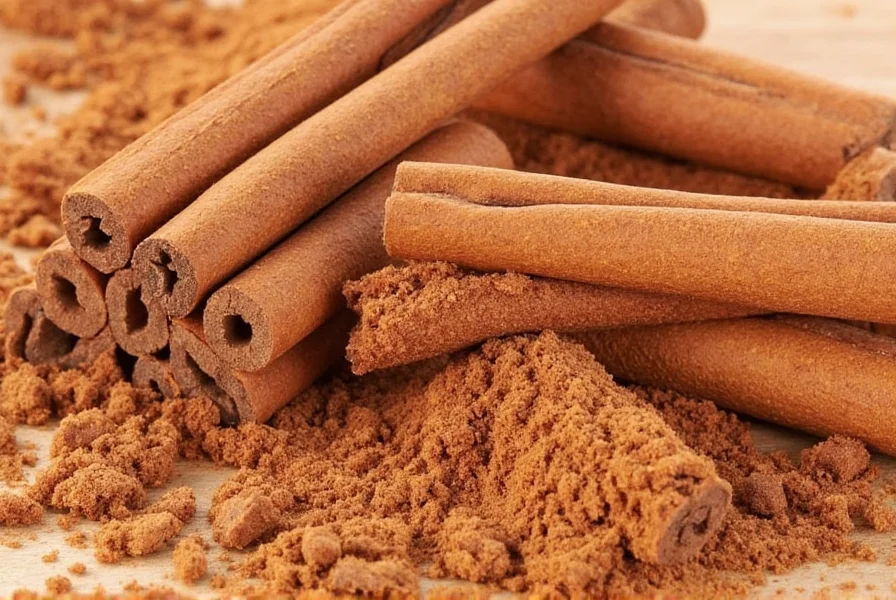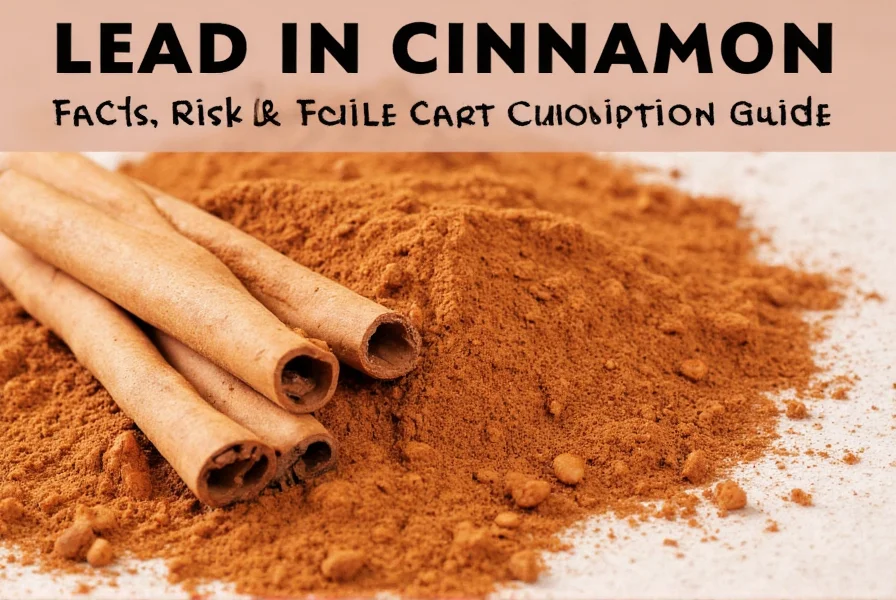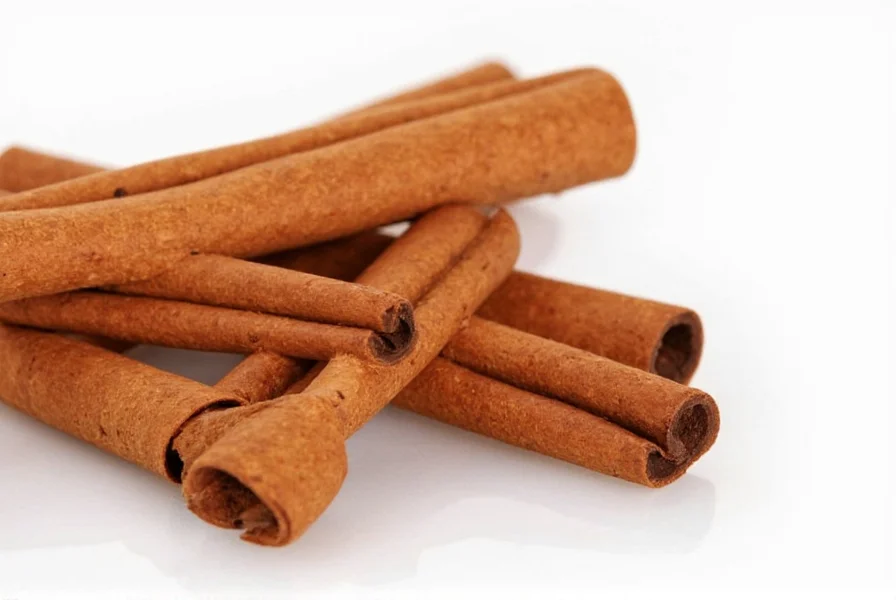When you sprinkle cinnamon on your morning oatmeal or blend it into a smoothie, you're probably not thinking about potential contaminants. Yet recent concerns about lead in cinnamon products have prompted many health-conscious consumers to question: Is my cinnamon safe? Understanding the reality behind lead contamination in cinnamon requires examining scientific evidence, regulatory standards, and practical purchasing guidance.
How Lead Enters the Cinnamon Supply Chain
Unlike naturally occurring compounds, lead doesn't belong in cinnamon. Contamination typically occurs through:
- Soil absorption - Cinnamon trees grown in areas with lead-contaminated soil may absorb trace amounts
- Processing equipment - Older machinery containing lead components can transfer particles
- Storage conditions - Improper storage in lead-containing containers
- Environmental pollution - Airborne lead particles settling on drying cinnamon bark
Research published in the Journal of Agricultural and Food Chemistry (2022) analyzed 120 cinnamon samples from global sources, finding that products from certain Southeast Asian regions showed higher lead concentrations due to industrial pollution near cultivation areas. This highlights why origin of cinnamon matters for lead content.
| Cinnamon Type | Average Lead Level (ppm) | Primary Source Regions | Lead Risk Assessment |
|---|---|---|---|
| Ceylon Cinnamon | 0.12-0.8 | Sri Lanka, India | Lowest risk |
| Cassia Cinnamon | 0.5-2.1 | China, Indonesia, Vietnam | Moderate risk |
| Specialty Blends | 0.3-3.7* | Various | Variable risk |
*Higher values typically from products without third-party testing; FDA action level is 2.5 ppm for powdered spices
Health Implications of Lead in Cinnamon
The Centers for Disease Control and Prevention emphasizes that no level of lead exposure is considered safe, particularly for children and pregnant women. However, the actual risk from cinnamon lead levels depends on:
- Consumption frequency - Occasional use poses minimal risk
- Daily quantity - Typical culinary use (½-1 tsp) generally falls below concern thresholds
- Individual vulnerability - Children absorb 4-5 times more lead than adults
- Combined exposure - Cinnamon contributes to total dietary lead intake
A 2023 study in Food Chemistry calculated that consuming 1 teaspoon of cinnamon containing 2 ppm lead would contribute approximately 3% of the FDA's Provisional Tolerable Weekly Intake for a 70kg adult. This contextualizes why is cinnamon safe to eat depends on multiple factors beyond simple detection of lead.

Regulatory Standards and Recent Incidents
The U.S. Food and Drug Administration maintains a lead action level of 2.5 parts per million (ppm) for powdered spices. In early 2023, certain cinnamon-based apple puree products were recalled after testing revealed lead levels exceeding 20 ppm—demonstrating how lead contamination in cinnamon can become critical in specific product formulations.
International standards vary significantly:
- European Union: 0.5 ppm for lead in spices
- Canada: 2.0 ppm maximum
- United States: 2.5 ppm action level
- Japan: 0.3 ppm for certain spice categories
These differences explain why cinnamon lead levels might be acceptable in one market but rejected in another. The stricter EU standards particularly impact cassia vs ceylon cinnamon lead content comparisons, as Cassia varieties more frequently approach or exceed 0.5 ppm.
Practical Guidance for Consumers
Concerned about how to avoid lead in spices? Implement these evidence-based strategies:
- Choose Ceylon over Cassia - "True cinnamon" generally shows lower heavy metal accumulation
- Check origin information - Products from Sri Lanka typically demonstrate better safety profiles
- Look for third-party testing - Certifications like NSF, ConsumerLab, or USP verify heavy metal levels
- Vary your spice sources - Don't rely on a single brand or supplier
- Store properly - Keep in glass containers away from potential contamination sources
When evaluating products, examine labels for phrases like "tested for heavy metals" or "meets California Prop 65 standards." Reputable companies increasingly provide testing cinnamon for lead documentation upon request—a practice that's becoming industry standard among premium spice vendors.

Industry Response and Testing Methods
The American Spice Trade Association reports that 78% of major U.S. spice companies now implement routine heavy metal screening, up from 42% in 2020. Modern testing methods include:
- Inductively Coupled Plasma Mass Spectrometry (ICP-MS) - Detects lead at parts per billion levels
- X-ray Fluorescence (XRF) - Non-destructive field testing option
- Atomic Absorption Spectroscopy - Traditional laboratory method
These advancements in heavy metals in cinnamon detection have made contamination incidents less frequent but more identifiable. The industry shift toward transparency means consumers researching does cinnamon contain lead can increasingly find documented test results from responsible manufacturers.
Conclusion: Balancing Awareness and Perspective
While legitimate concerns exist about lead in cinnamon, panic is unwarranted. Most commercially available products fall within established safety parameters. The key is informed purchasing—understanding that cinnamon lead content varies by type, origin, and brand practices. By choosing reputable sources, varying your spice suppliers, and staying informed about product testing, you can continue enjoying cinnamon's health benefits without significant lead exposure risk.
Does organic cinnamon have less lead than conventional?
Organic certification doesn't guarantee lower lead levels. Lead contamination comes from environmental factors rather than farming practices. Both organic and conventional cinnamon can contain lead depending on soil conditions and processing methods. Look for products with specific heavy metal testing regardless of organic status.
How much cinnamon is safe to consume daily regarding lead exposure?
For most adults, consuming up to 1 teaspoon (2.6g) of commercially available cinnamon daily poses minimal lead risk, assuming lead levels are below 2 ppm. Children should limit intake to ¼-½ teaspoon daily. Those with specific health concerns should consult a healthcare provider about cinnamon lead levels in their diet.
Which type of cinnamon has the lowest lead content?
Ceylon cinnamon (often labeled "true cinnamon") generally demonstrates lower lead accumulation than Cassia varieties. Studies show Ceylon typically contains 0.12-0.8 ppm lead compared to Cassia's 0.5-2.1 ppm range. When concerned about lead in cinnamon products, choosing Ceylon from Sri Lankan sources provides the lowest risk profile.
Can cooking or baking reduce lead content in cinnamon?
No, lead is a stable element that doesn't break down with heat. Cooking or baking won't reduce lead contamination in cinnamon. The only effective approach is selecting products with verified low lead levels through third-party testing before purchase.
How can I verify if my cinnamon has been tested for lead?
Check product packaging for certifications like NSF, ConsumerLab, or USP verification. Reputable brands often provide batch-specific test results on their websites or upon request. You can also look for compliance statements referencing California Prop 65 standards. When in doubt, contact the manufacturer directly to inquire about their testing cinnamon for lead protocols.











 浙公网安备
33010002000092号
浙公网安备
33010002000092号 浙B2-20120091-4
浙B2-20120091-4